0600 – terrorists Mohammed Atta and Abdulaziz al-Omari traveled to Logan International Airport from Portland International Jetport in Portland, Maine.
0652 – fellow terrorist Marwan al-Shehhi called Atta at Logan to confirm the plans of the attack.
Although we’re currently at a trade show in London, we’re going to take a pause and remember the loss and sacrifice made by so many on September 11th, 2001 and in the ensuing years.
On this anniversary, we want to honor the heroes of Flight 93 who made a decision that they weren’t going to become pawns in a crazed attempt to decapitate our government. They took the enemy on, firsthand. They will always have our respect.
The Crew
Jason Dahl
LeRoy Homer, Jr.
Lorraine Bay
Sandra Bradshaw
Cee Cee Lyles
Wanda Green
Deborah Anne Jacobs Welsh
The Passengers
Christian Adams
Todd Beamer
Alan Beaven
Mark Bingham
Deora Bodley
Marion Britton
Thomas E. Burnett Jr.
Willam Cashman
Georgine Rose Corrigan
Patricia Cushing
Joseph DeLuca
Patrick “Joe” Driscoll
Edward Porter Felt
Jane Folger
Colleen L. Fraser
Andrew Garcia
Jeremy Glick
Lauren Grandcolas
Donald F. Greene
Linda Gronlund
Richard Guadagno
Toshiya Kuge
Hilda Marcin
Waleska Martinez
Nicole Miller
Louis J. Nacke II
Donald and Jean Peterson
Mark “Mickey” Rothenberg
Christine Snyder
John Talignani
Honor Elizabeth Wainio
Kristin Gould White
We will not name the hijackers. May they forever be dishonored.
London, 11th September, 2019: Drone Evolution launches its new patented rotary UAV protection technology at DSEI 2019. Named SafeFlight, the system protects delivery drones from being jammed and its titanium shell protects it from a variety of external forces.

Using a range of navigation systems, SafeFlight can switch between them if it comes under attack, meaning that it can always stay on course for its destination. The titanium shell ensures it remains lightweight but impervious to small arms fire and laser attacks. Anti-jamming systems in the motors mean that they also remain resilient to electronic interference.
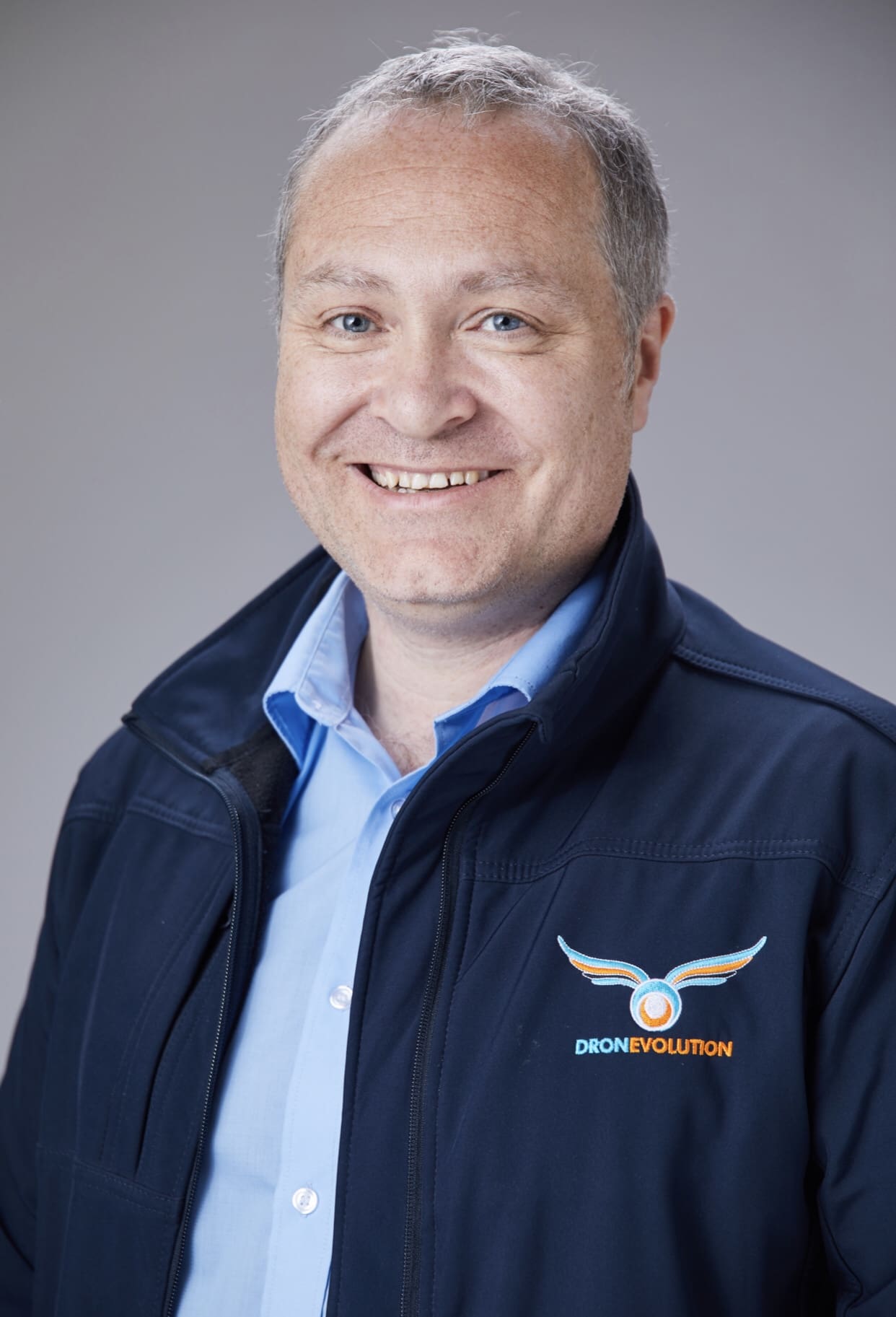
Toby Townrow, Communications Director at Drone Evolution, said: “We’re really excited to start telling the world about SafeFlight. Development of SafeFlight technology means that the nascent drone delivery industry can protect the public, the assets and the integrity of the industry itself, knowing that delivered items will always reach their destination however much bad actors may want to interfere with it.
“We are delighted to take Drone Evolution to its next level both in business and technology. I am particularly looking forward to launching this concept at DSEI 2019. This could be a game-changer for drone deliveries, one that could help to see them finally become a reality in both military and civilian life.”
LONDON (DSEI STAND S-7 310)
Sep 10, 2019
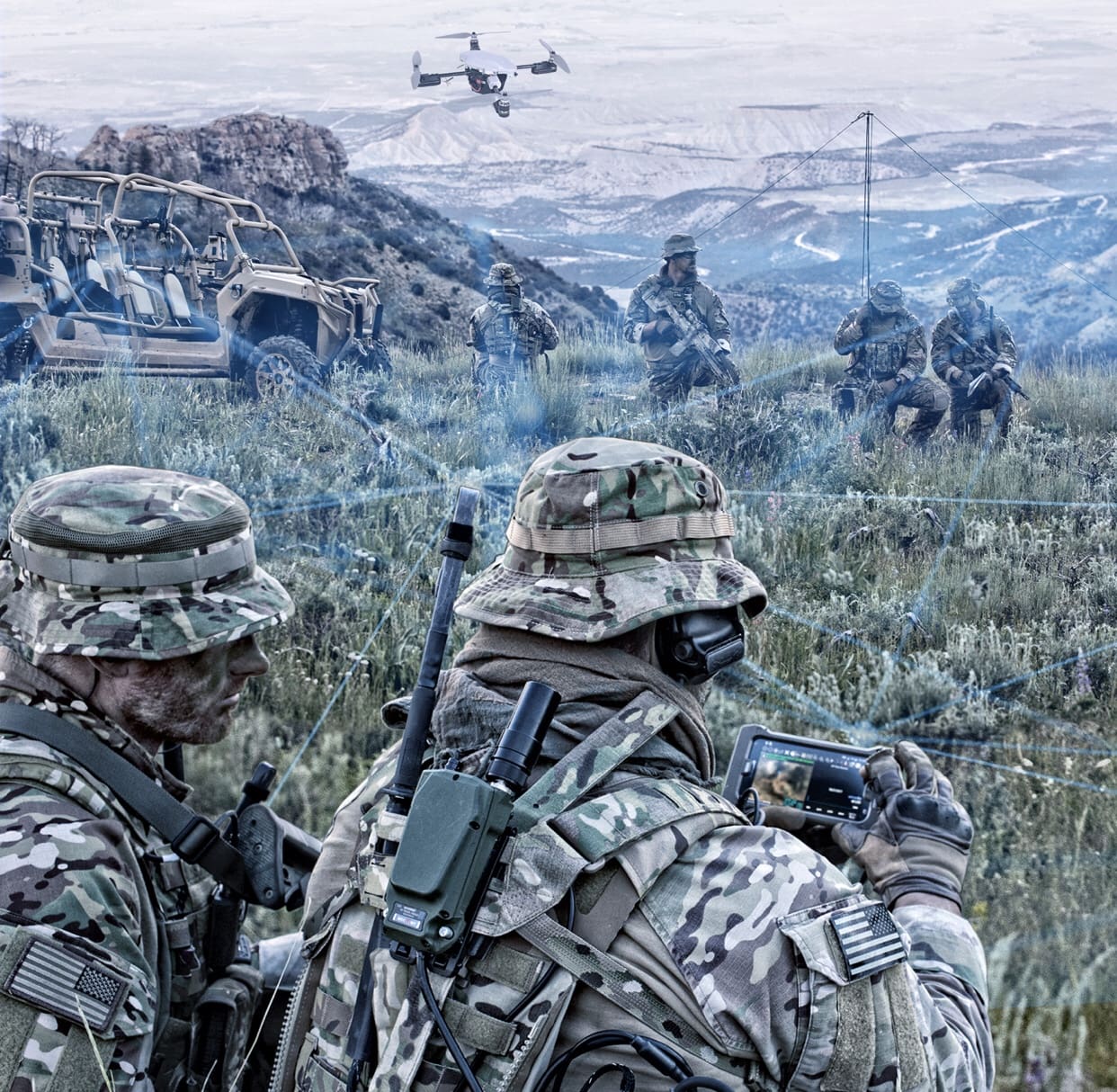
Highlights:
• Radios offer software defined, multichannel capabilities in a single, integrated, power-efficient platform
• Delivers next-generation capabilities and full interoperability with previous Falcon radios
• Provides resilient communications for congested/denied environments
L3Harris Technologies (NYSE:LHX) will showcase members of its Falcon IV® family of radios – which offer users an integrated view of the battlefield in a single, multichannel platform – at the Defense Security Equipment International (DSEI) 2019 tradeshow in London September 10-13.
The Falcon IV® family of radios delivers the convergence of next-generation capabilities including HD full-motion video, situational awareness, voice, multi-channel crossbanding and enemy RF sensing and awareness in a single, integrated, power-efficient platform.
Capabilities of the Falcon IV® platforms include:
• Multiband/multi-mission: enables users to match the right frequency band that is most appropriate for the mission.
• Library of waveforms: enables full primary, alternate, contingency and emergency communications allowing users to complete their mission in congested and denied RF environments.
• Multi-channel: ability to access numerous channels eliminates the need to carry multiple radios.
• Extended wideband: increased throughput for high-definition, full-motion video in an easy-to-deploy network mode.
• Software defined encryption: L3Harris’ Sierra II and Denali® security architectures provide high-data-rate encryption with the ability to modernize with a simple software update that requires no hardware replacement.
• Crossbanding: controlled management of information (voice, data, images) and access from disparate groups, providing simplified command of complex or joint operations.
• Mission modules: standard interfaces enable seamless extension of the platform’s capabilities.
“The Falcon IV® family demonstrates L3Harris’ commitment to advancing tactical communications to give our warfighters the next-generation capabilities and situational awareness they need on today’s multi-domain battlefield,” said Dana Mehnert, President, L3Harris Communication Systems. “L3Harris’ Falcon family ensures the warfighter has the security, interoperability and resilient networking capabilities needed to maneuver, fight, and win on the contested and congested battlefield.”
MARINE CORPS BASE QUANTICO, Va. —
Less than 11 months after seeking industry proposals for a new helmet-mounted night vision system, Marine Corps Systems Command has awarded a contract to provide an updated system to Marines.
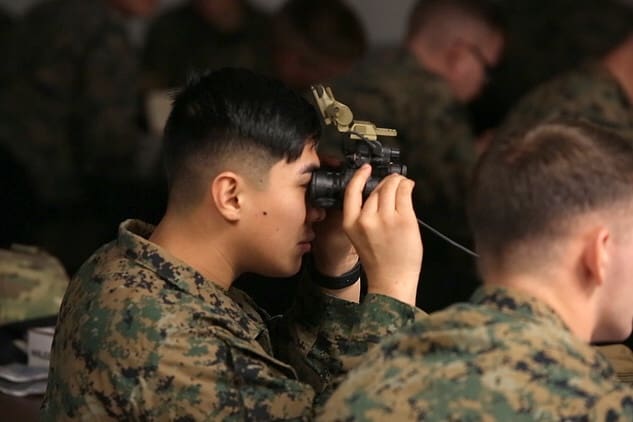
Harris Corporation of Roanoke, Virginia, was awarded a maximum $249,000,000 firm-fixed-price, indefinite-delivery/indefinite-quantity contract Sept. 6, for the purchase of the Squad Binocular Night Vision Goggle system. Approximately 14,000 systems will be delivered, and the work will be completed by September 2024.
The SBNVG combines two systems: a binocular night vision device and enhanced clip-on thermal imager. It is lighter than the current Army/Navy Portable Visual Search devices, or AN/PVS-15. The SBNVG also has improved depth perception, and the ability to detect and recognize targets in extreme low light, in inclement weather and in the presence of obscurants.
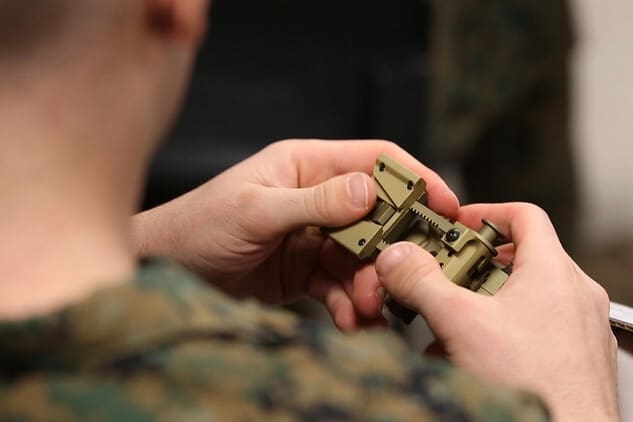
“Additionally, the use of white phosphor provides a greater capability to see at night with more clarity, giving Marines enhanced situational awareness,” said Lt. Col. Tim Hough, program manager for Infantry Weapons at MCSC.
The Corps previously used an existing Defense Logistics Agency contract to procure 1,300 systems to see how an interim solution could best meet the capability requirement.
“We made the investment to procure the 1,300 systems and fielded them to two infantry battalion, so we already had a good, robust understanding of the technology we were chasing,” said Roberto Gonzalez, team lead for Combat Optics at MCSC. “That allowed us to quickly get through the source selection process [for this contract].”
Using full and open competition, MCSC also realized approximately $70 million in savings across the Future Years Defense Program.
Marine infantry units will be the first to receive the new night vision goggles when fielding begins in the spring of 2020.
“Awarding this SBNVG contract and fielding these systems to the warfighter is one more step toward increasing the command and control, lethality and ability of the infantry squad to overwhelm our adversaries,” said Hough.
Story by Monique Randolph, MCSC Office of Public Affairs and Communication | Marine Corps Systems Command
U.S. Marine Corps photos by Joseph Neigh
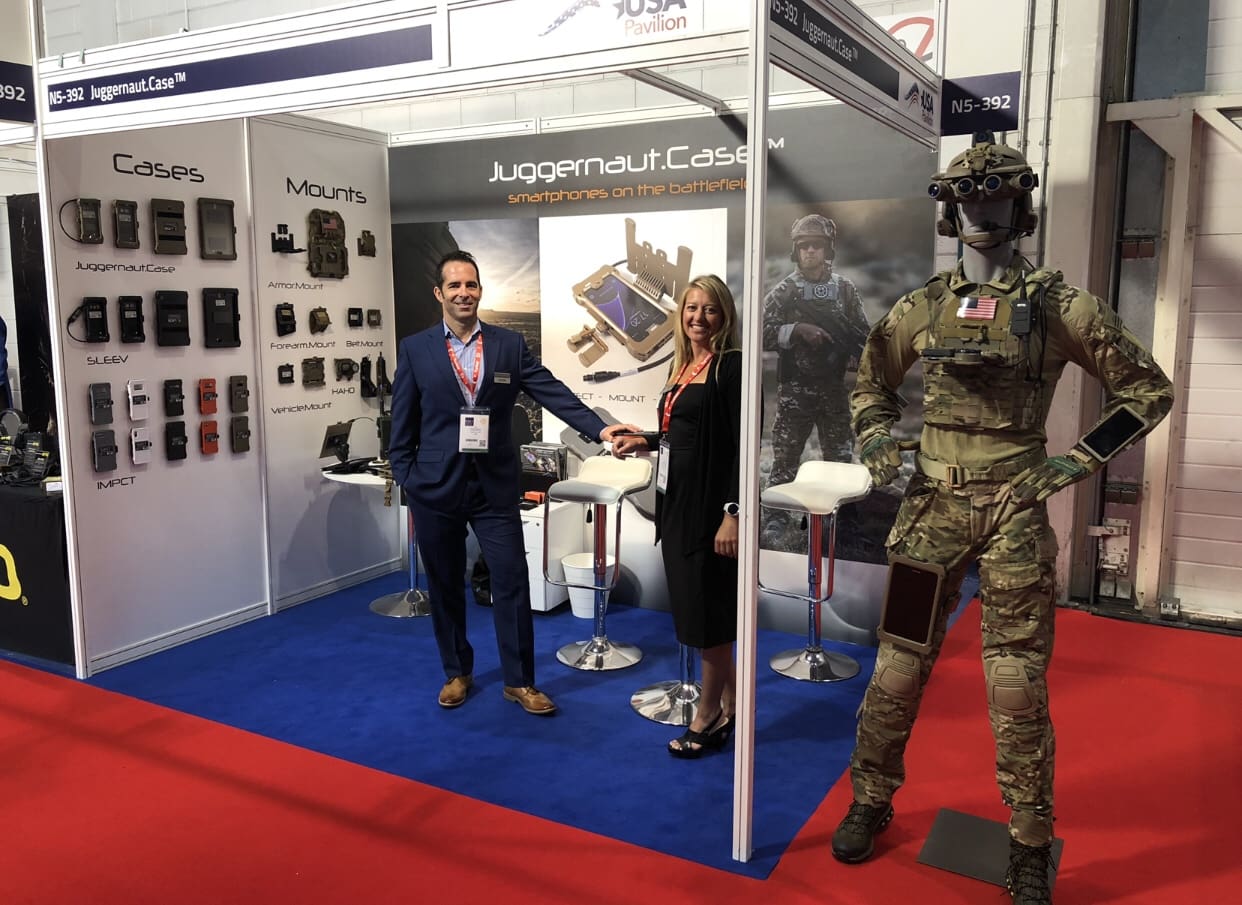
Juggernaut.Case’s Chris Stalzer showed us their Ejection-Seat Electronic Kneeboard Solution which recently passed testing. It features a two-strap configuration utilizing the new ITW Nexus GT-Cobra polymer buckle and a laminar-airflow mount-base that contours to the pilot’s leg to which the case is fastened to. This design also affords a stable platform on the pilot’s leg for tablet use. Paper maps and aluminum chart holders become an unnecessary addition to the cockpit, except for backup maps that are carried separately.
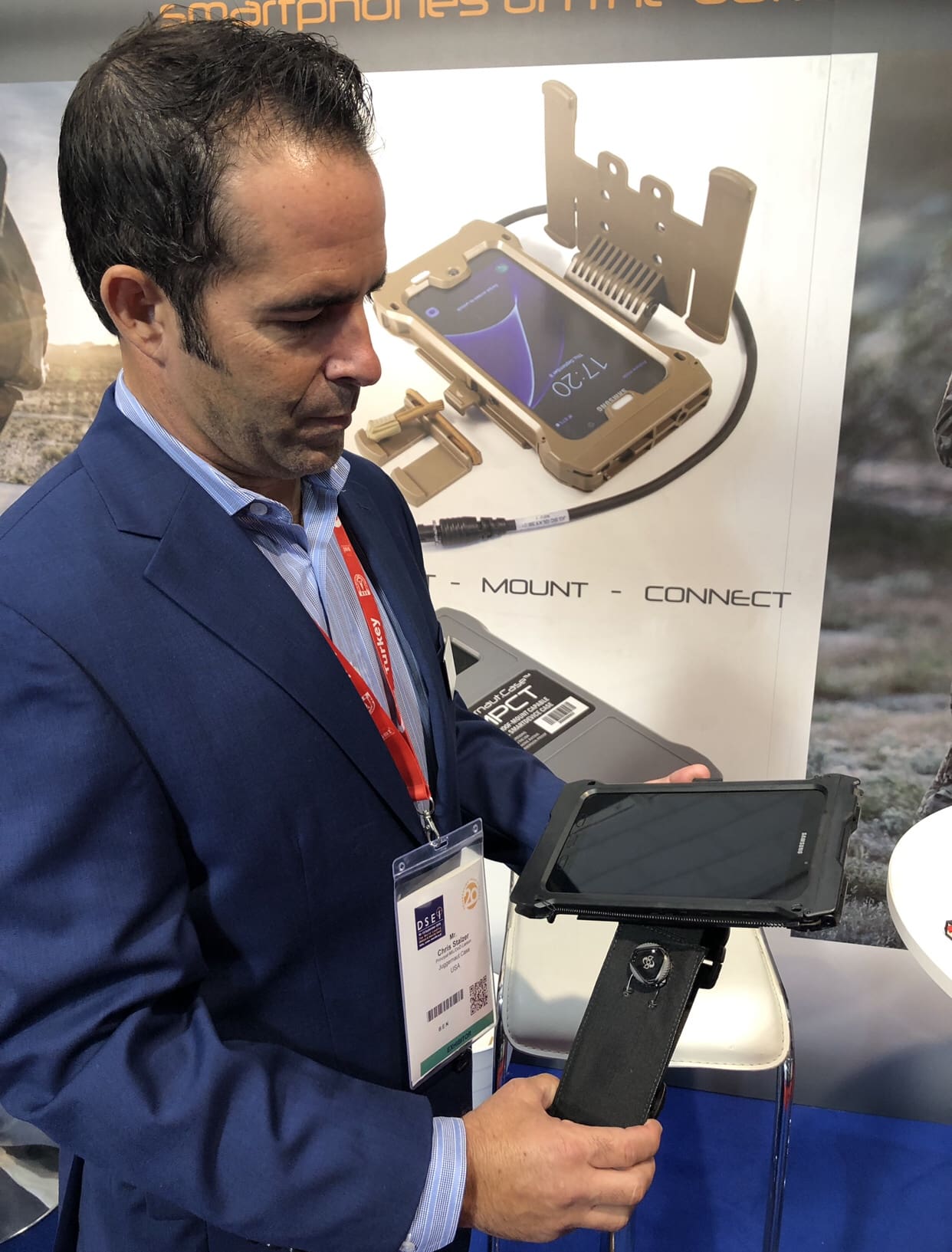
shop.juggernautcase.com/products/mount-ejection-seat-ekb-solution
Sea to Summit is well known for their lightweight camping and hiking gear. Recently, they have introduced a military range to satisfy the needs of the Australian military. We’ll give you a look at a couple of their offerings.
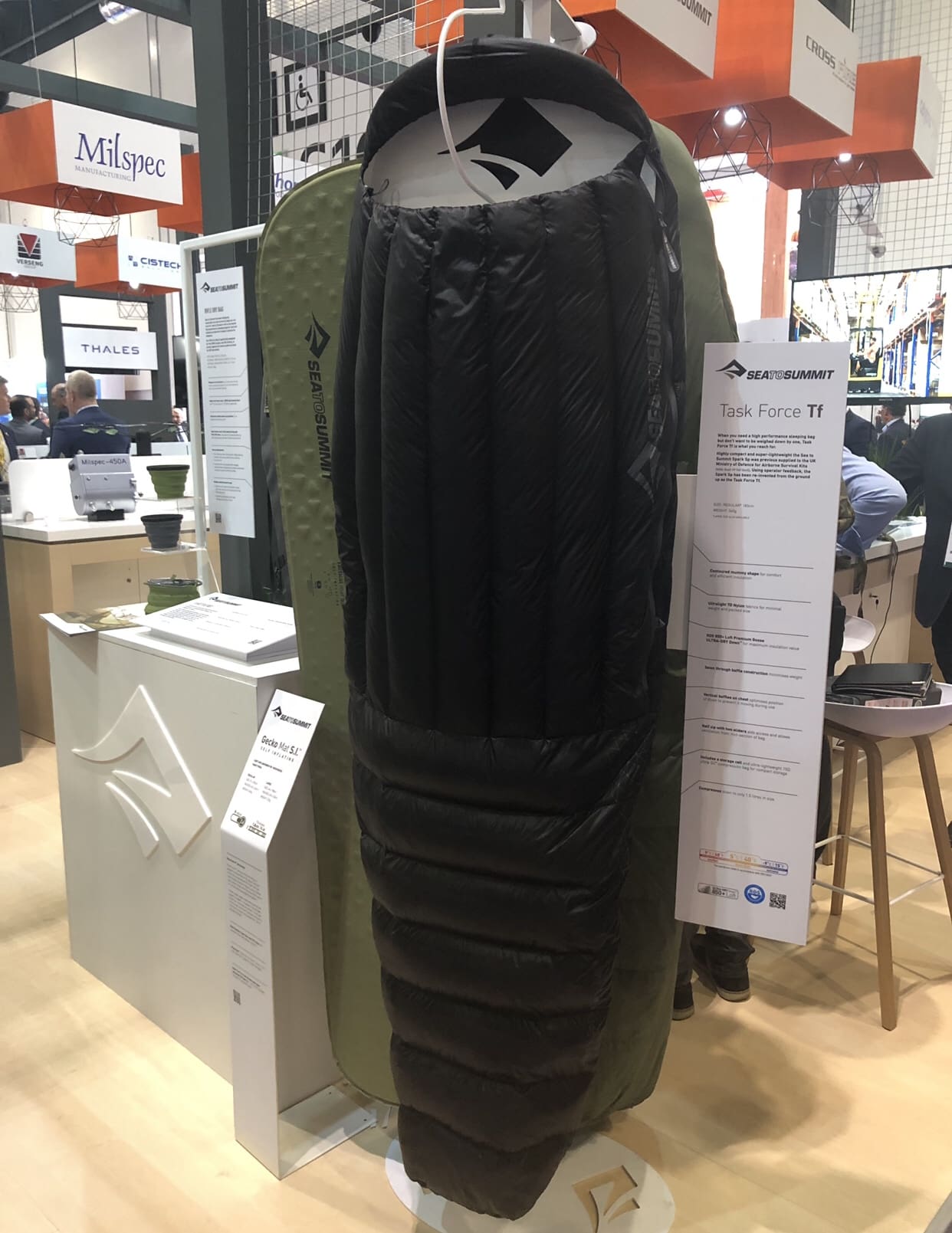
This is the Task Force Tf Sleeping Bag. Based on the Spark Sp which has been supplied for years as part of UK MOD aviation survival kits, the Task Force Tf is filled with 850+ Premium Goose ULTRA-DRY Down. This gives protection down to -9 Deg Celsius at a weight of just 340g. As you can see, it compresses down to just 1.5 liters in size.
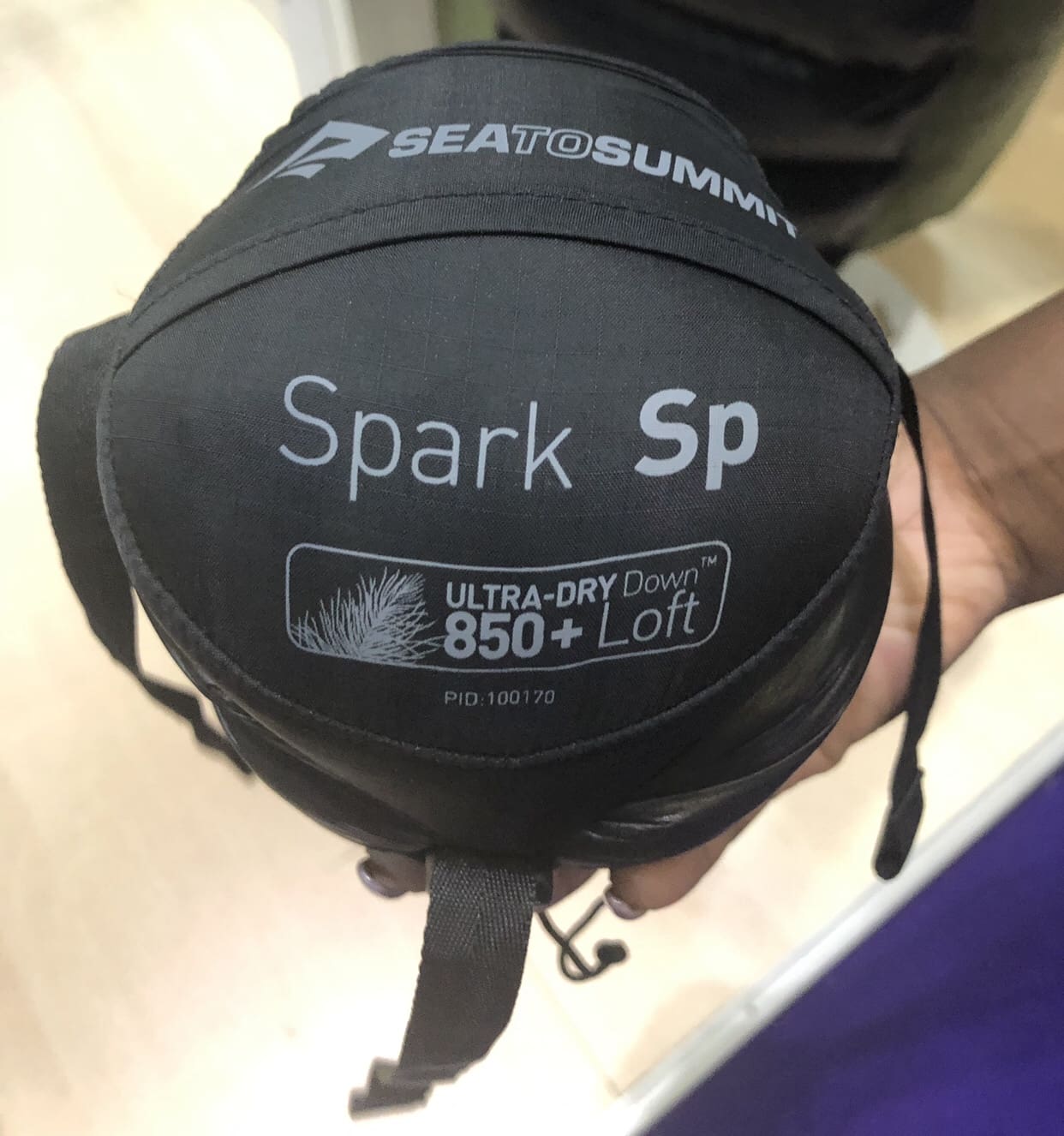
Next up is the X-Kettle Set. The bottom is mettle and will take direct flame. This kit contains an X-kettle and two mugs nested together.
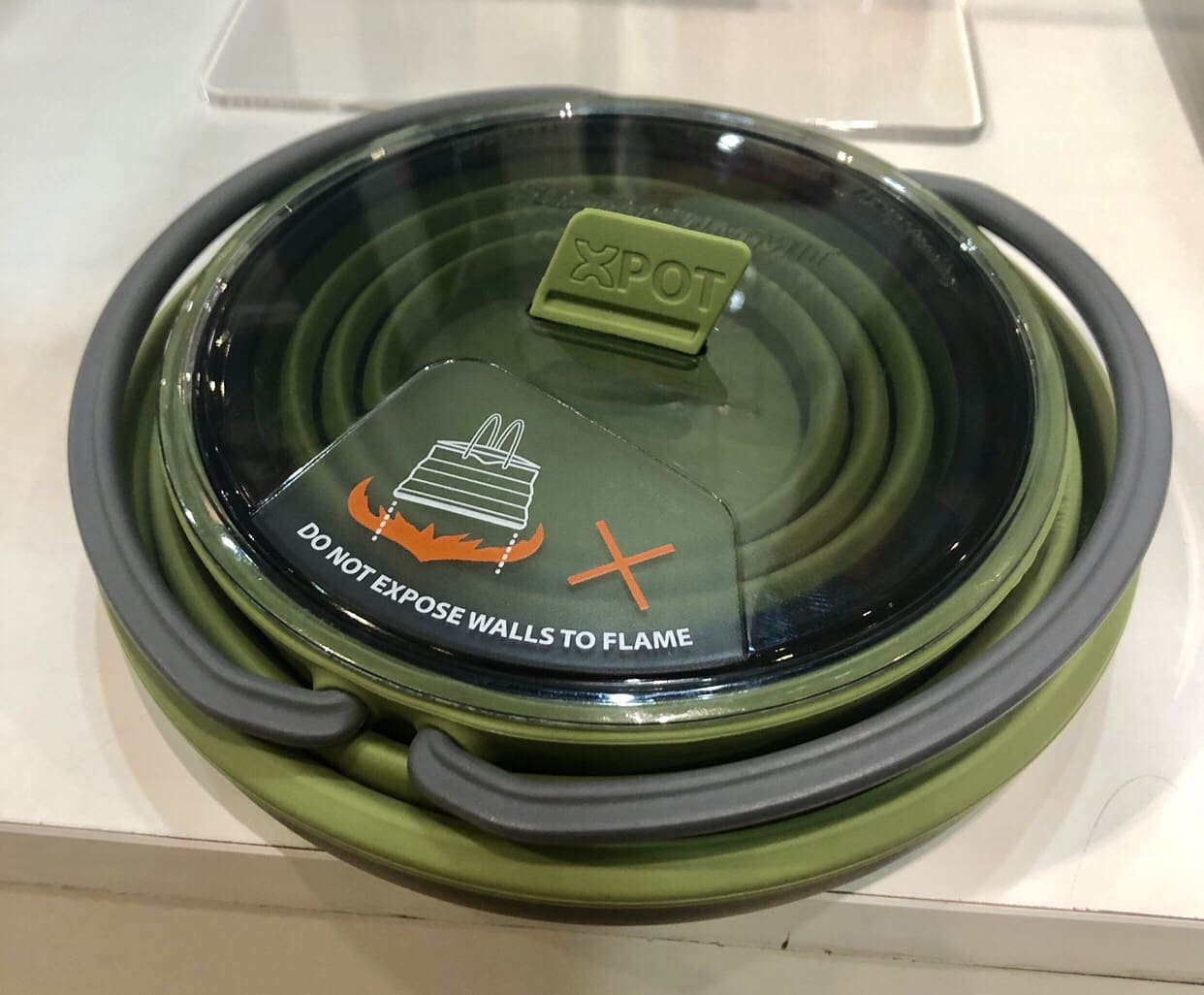
The X-kettle has a 1.3 liter capacity and weighs 885 grams, collapsing to just 35mm high. This color is only available in the military version.
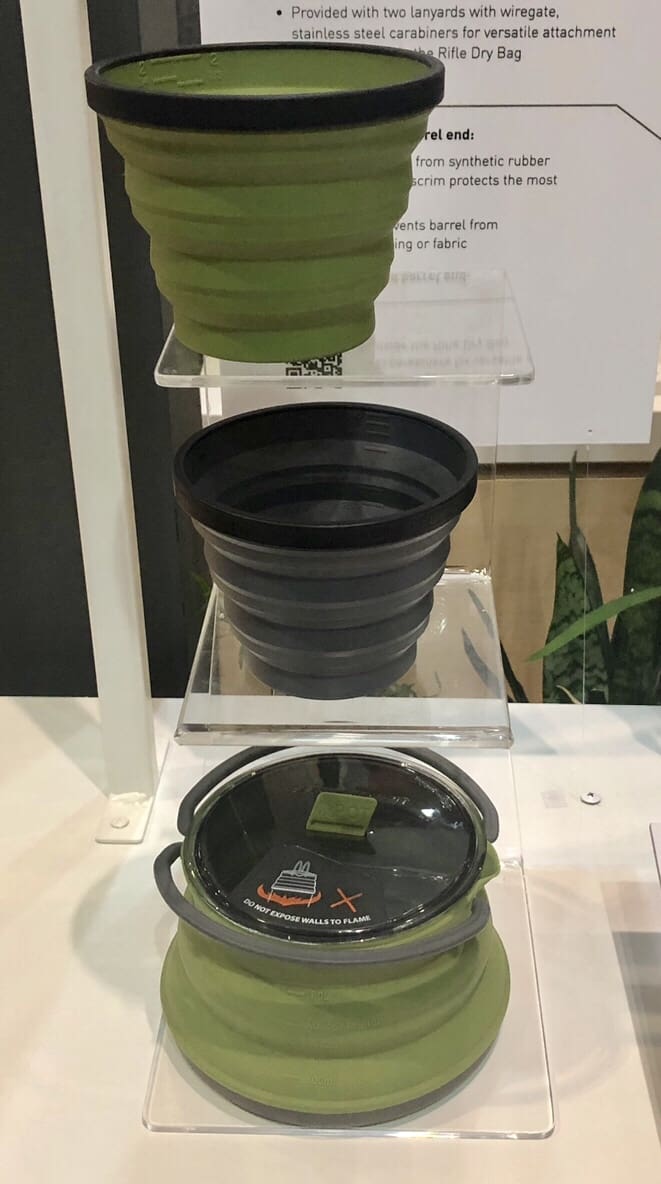
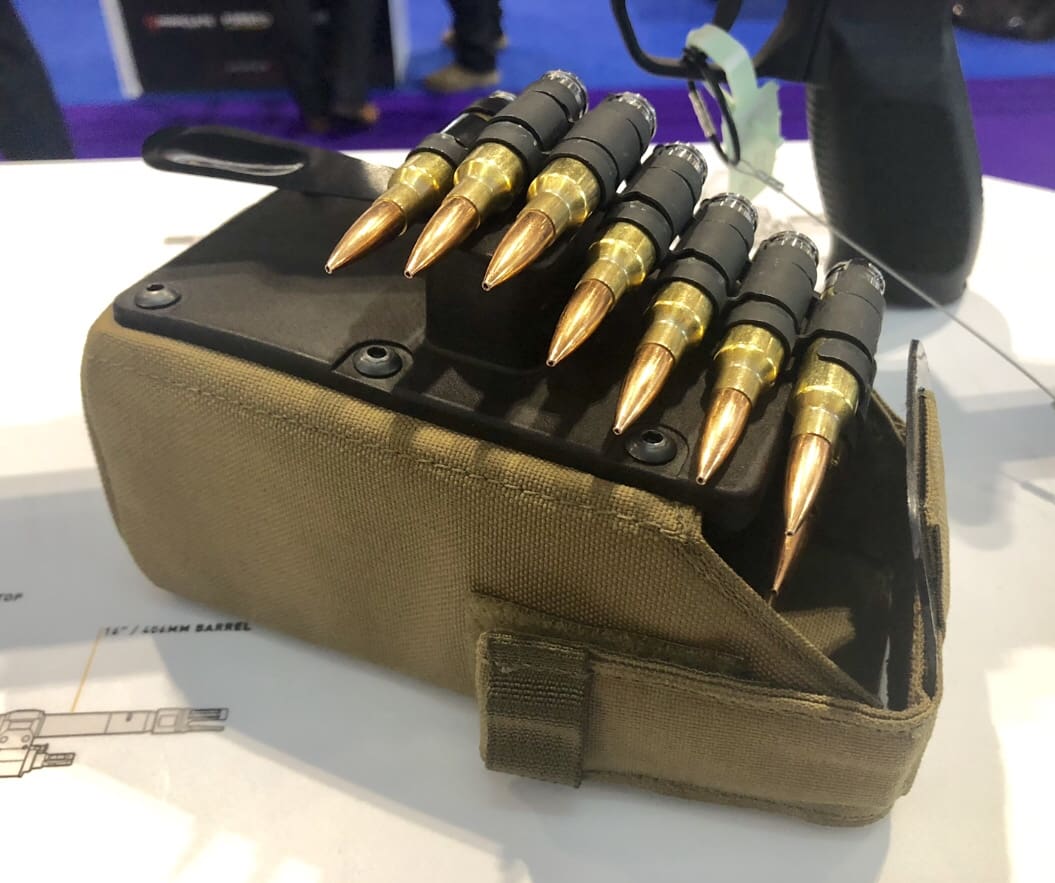
We got a better look at the ammo bag for SIG’s Next Generation Weapon Automatic Rifle candidate in 6.8 x 51mm.
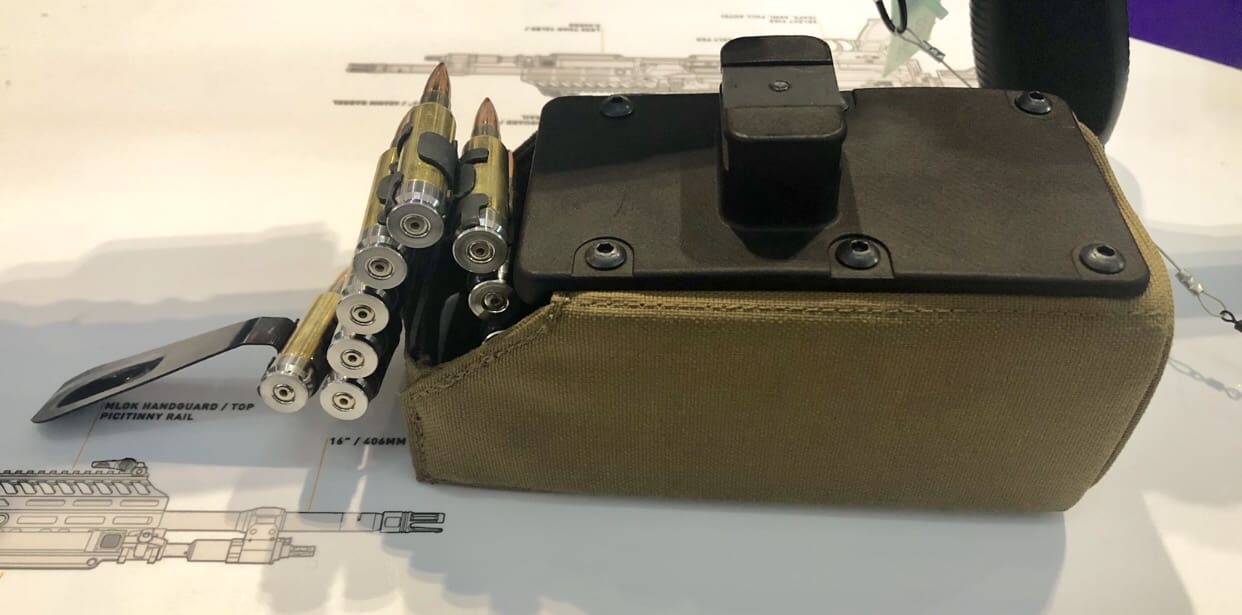
Available in 50, 100, or 200 round capacity, this soft bag has a clip integrated at the top to attach it to the MG.
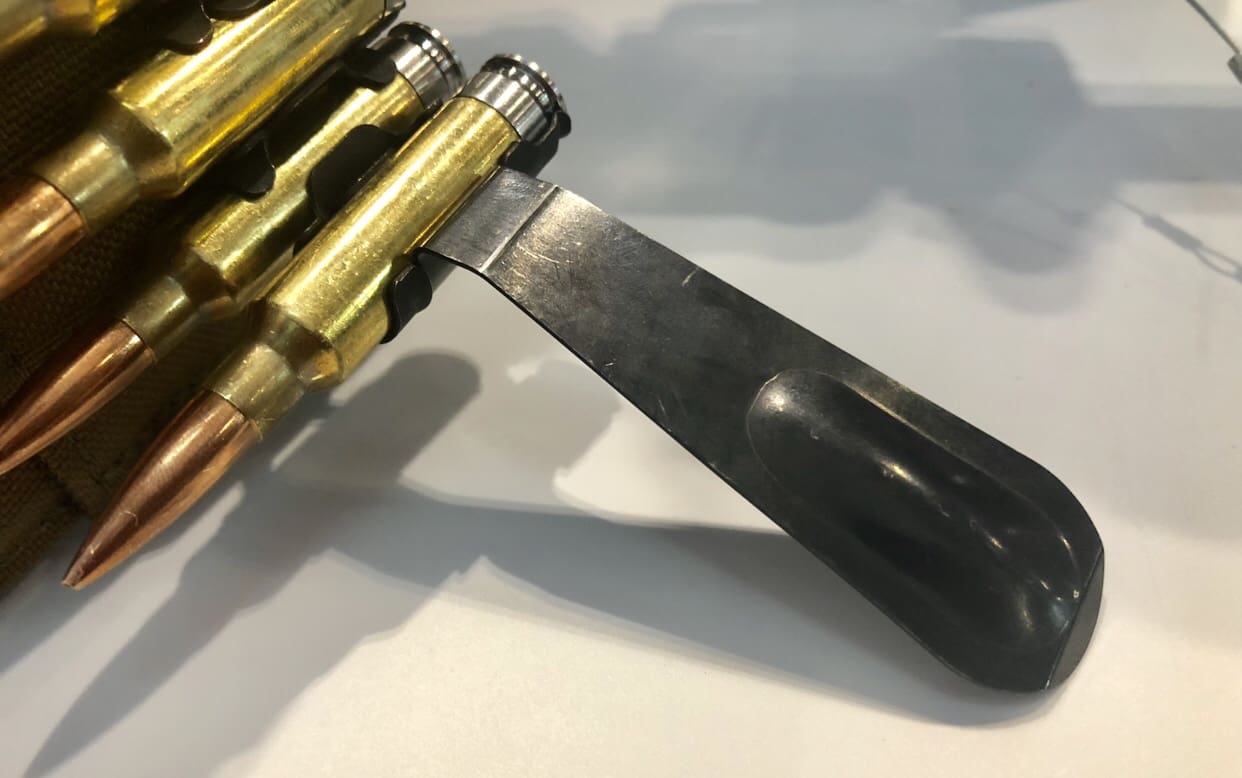
The belt links start with a spoon which is inserted into the feedtray and pulled through the other side to seat the first round.